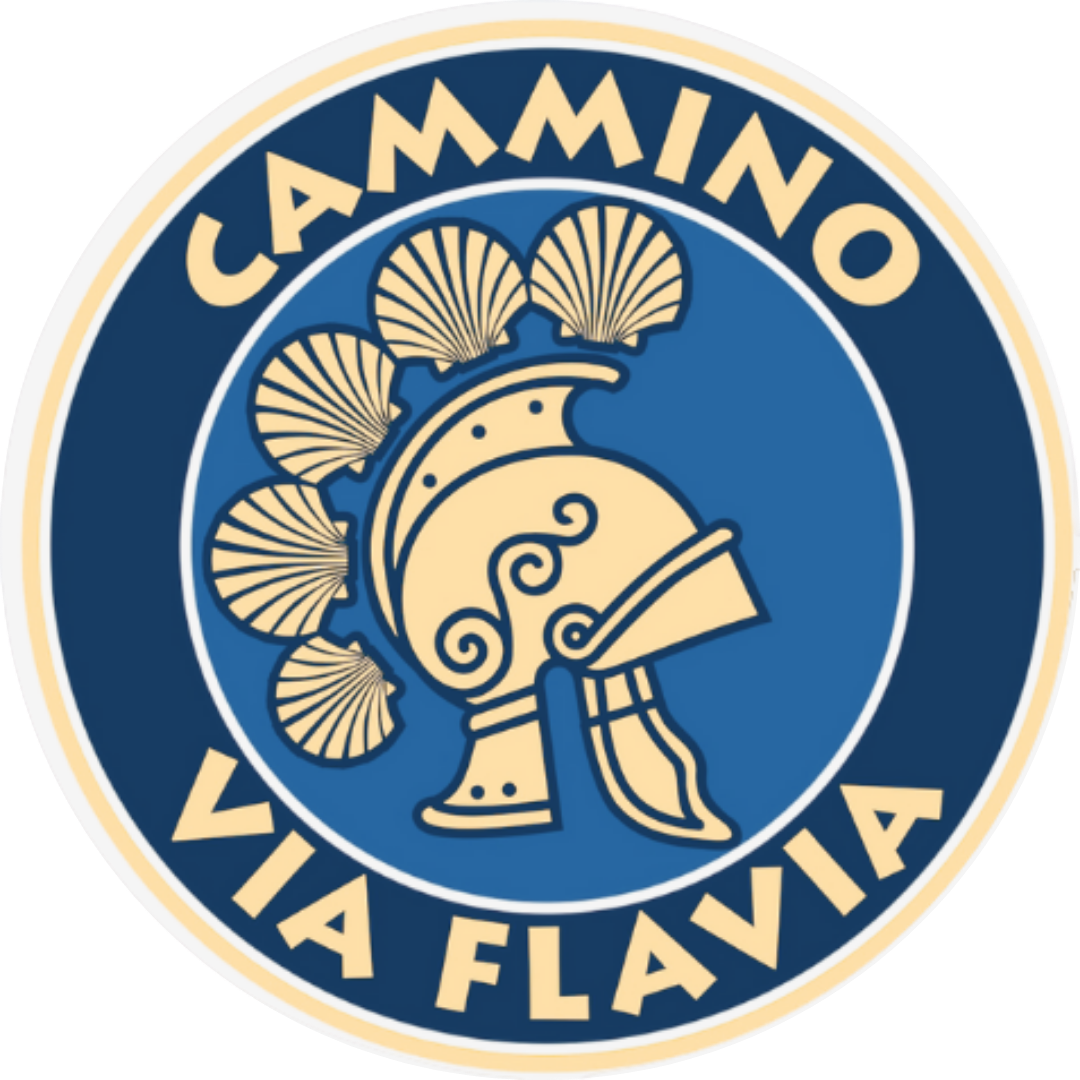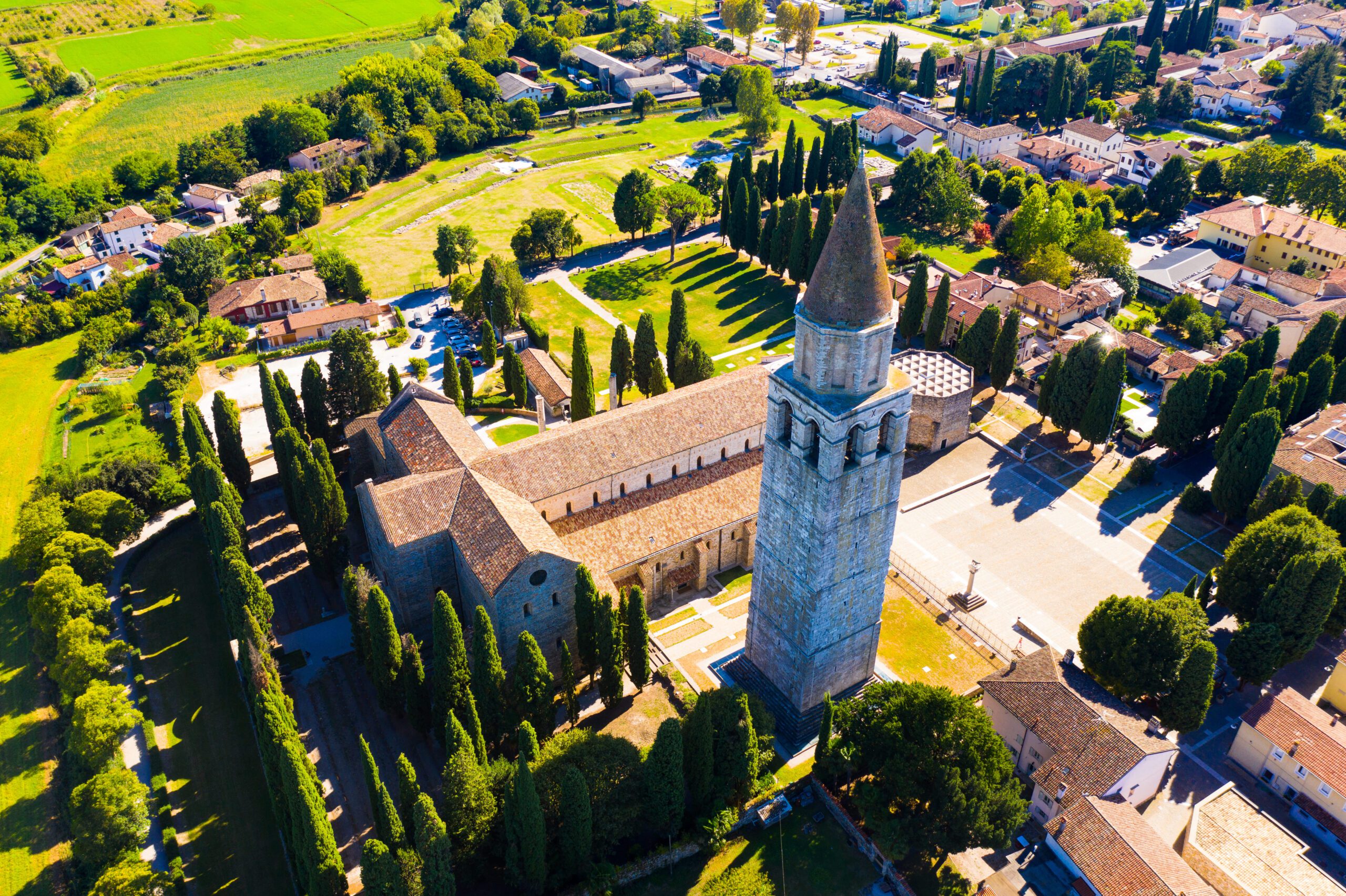
Via Flavia
The Cammino della Via Flavia leads to Italy’s far northeast, to its eastern gateway between Venezia-Giulia and Friuli where, on white limestone cliffs and fine golden sands, Europe plunges into the northernmost point of the Mediterranean.
At the edge of the Gulf of Trieste, where Europe dives into the Adriatic Sea, where waters, languages and borders cross, among shrines, castles and archaeology, crossing nature and wildlife reserves, in the truest Karst and the lagoon of reeds, land of trade, transit of people, travelers and pilgrims, you here leave your trace the Way Via Flavia from an ancient Roman road. Leave your footprints will be delighted.
Scheda Tecnica
-
Lunghezza:
116 km -
Tappe:
5 -
Partenza:
Lazzaretto -
Arrivo:
Aquileia -
Periodo ideale:
Spring and autumn
HISTORY
The Roman Via Flavia originated from Aquileia, according to some sources, while others have it beginning in Trieste, ancient Tergeste. It probably skirted the sea for a stretch, then followed the Istrian peninsula to Parentium, today’s Porec, to reach Pula and up to Tersatica (Rijeka or Rijeka). In modern times it was thought to connect the Slovenian/Italian border on the sea, Lazzaretto precisely, with Aquileia, assuming that in addition to being a commercial and military route, it had been, in ancient times, a pilgrimage route to Rome or Santiago de Compostela.
WATER SOURCES.
It is not difficult to find water sources in the area because of the presentaza of fountains, bars or supermarkets. In summer, it is suggested to refuel well before the fourth STAGE as the above services are rarer.
STAGE-BY-STAGE SERVICES
Are there any supermarkets? Of course yes ,except for the fourth STAGE, they are found only at the start.
Are there any pharmacies? There are pharmacies along all the STAGES, for the fourth STAGE you have to lean on the start in Monfalcone.
SIGNAGE
Yellow arrow signs are clearly visible and constantly maintained .You can also find yellow arrow stickers on a blue field, yellow painted vignettes or the new signage with tabs on the pole with the Via logo and arrow sticker.
ROAD BOTTOM.
40% dirt 40% asphalt(on lightly traveled roads) 20% pedestrian/cycle
CREDENTIAL
The credentials of the Via Flavia you can request them from the following e-mail:
amv.associazione@gmail.com
TENT WALK
Where can one camp?There are campgrounds along the route open only in summer.
Permits needed?Some common sense is needed for free camping,some have done it by secluding themselves in the evening and leaving early in the morning.
DANGERS
It is important to pay attention to some stretches of ground that may be uneven or slippery, especially in rainy weather. For this reason, it is essential to wear appropriate footwear. There are no dangerous or stray animals along the trail.
CONTACTS
Association of reference is
amv.associazione@gmail.com or the Facebook page of: “Via Flavia a way to go”
Web: http: //www.camminoviaflavia.it/
STAGE 01
STAGE 1: Lazzaretto(Muggia)- Bagnoli della Rosandra 20.4 km. h 5.30 670m.elevation gain Difficulty:medium
Exciting route with breathtaking views of the Trieste coast, Istria and Grado in the distance. Green sandstone hills of Muggia and Dolina. You will cross the Rio Ospo valley with its small lakes and through forests to reach Bagnoli with Val Rosandra at the gateway to Classic Karst.
STAGE 02
STAGE 2:Bagnoli della Rosandra-Miramare(Trieste) 20 Km. h.4.30 180m.elevation gain Difficulty:easy
Leaving the scenic Rosandra Valley, following a scenic pedo-bike path you reach the wonderful center of Trieste always having as a reference the blue sea of the gulf with around green groves and countryside that characterize the city outskirts.
STAGE 03
STAGE 3:Miramare(Trieste)-Monfalcone 26 Km. h.6:00 390m.elevation gain Difficulty: challenging
or
Variante Alta 33.1 km. h.7.30 625m.difference in altitude Difficulty: Very challenging.
STAGE 04
STAGE 4: Monfalcone – Fossalon di Grado. Length: 27.7 km. Travel time: about 6 hours and 30 minutes. Height difference: 20 meters. Difficulty: quite challenging.
The landscape has completely changed and we are immersed in a coastal, sometimes marshy environment that represents an area reclaimed in the last century. There are many points of interest from a naturalistic point of view, such as biotopes, geosites, the Soča Mouth Nature Reserve, and the Cavanata Valley Regional Nature Reserve. It is important to take care before departure and stock up on drinks and food.
STAGE 05
STAGE 5: Fossalon di Grado – Aquileia. Length: 21.2 km. Travel time: about 4 hours and 40 minutes. Height difference: 35 meters. Difficulty: easy.
After leaving the reclaimed areas and nature reserves, you arrive in the seaside town of Grado, particularly beautiful in its old part. From here you can take the vaporetto to the island Sanctuary of Barbana and then conclude the Camino in Aquileia, a UNESCO site, where you can admire its Patriarchal Basilica, Roman ruins and visit the tombs of the 10 unknown soldiers, who were not chosen to represent all the fallen of the Italian wars (the one chosen is in the Altare della Patria in Rome).
